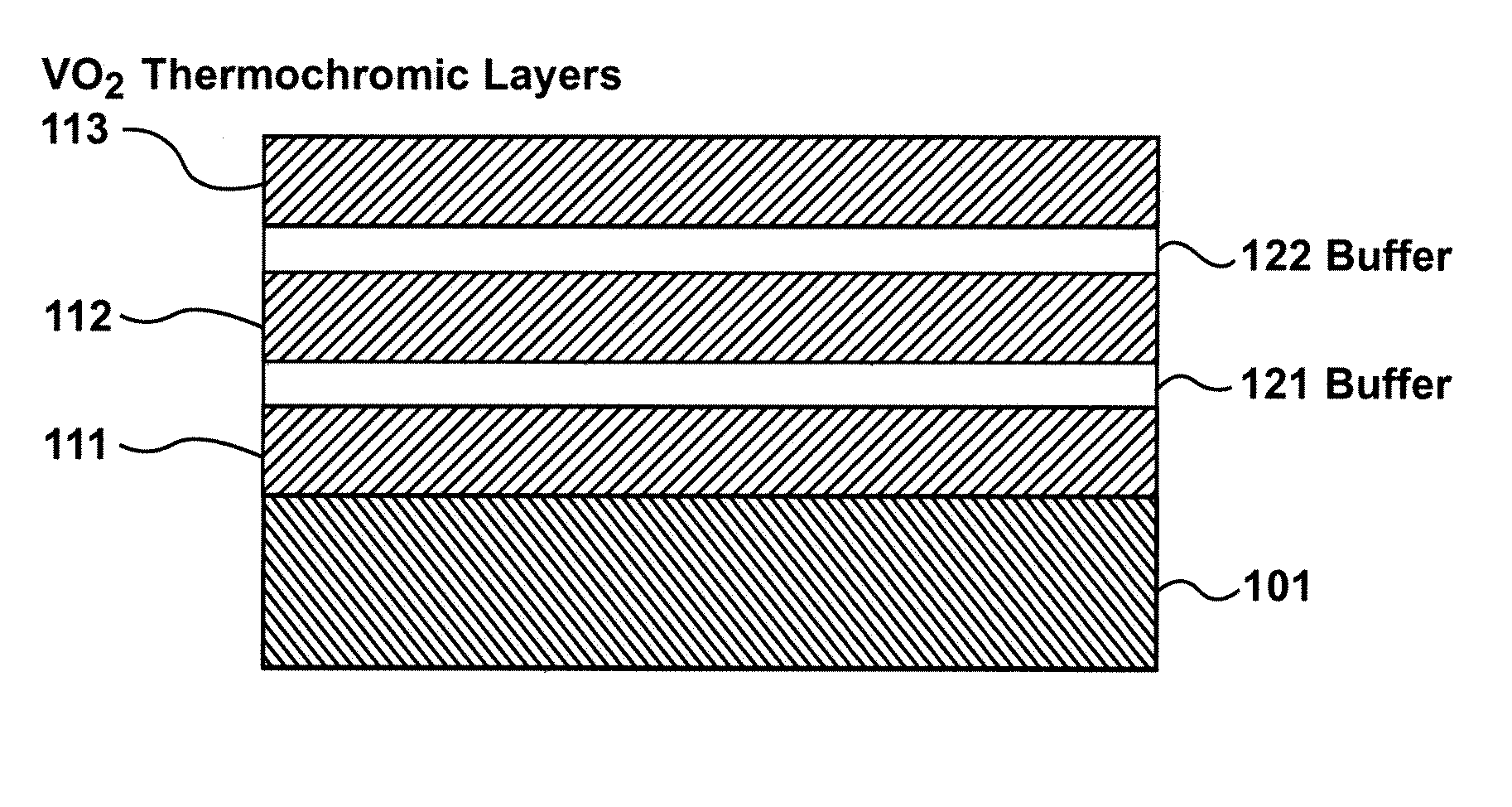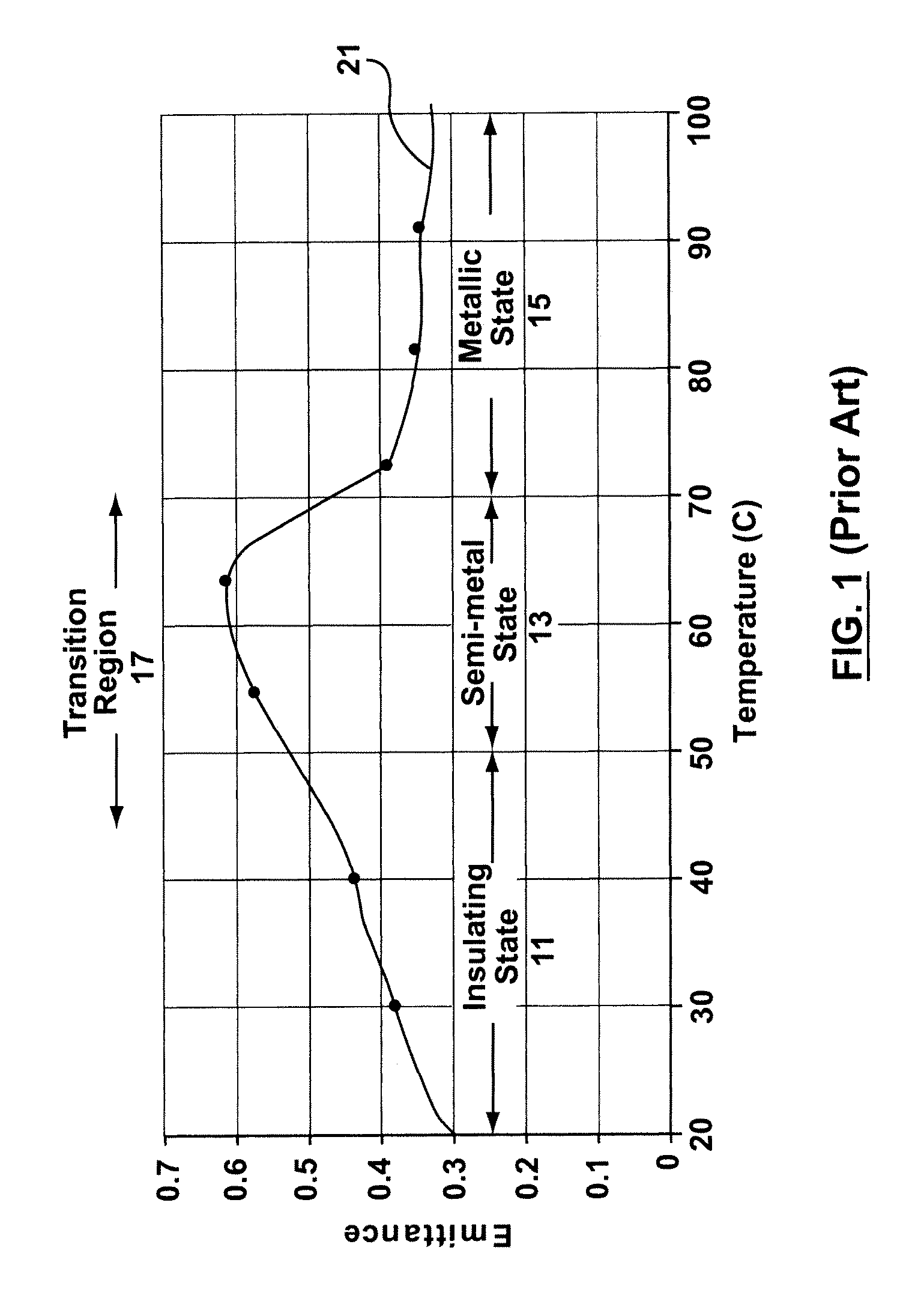Variable emittance thermochromic material and satellite system
a thermochromic material and variable emittance technology, applied in the direction of transmission, instruments, electrical equipment, etc., can solve the problems of low thermal capacitance, difficult temperature regulation, and relatively low mass of such spacecraft, and achieve the effect of maintaining spatial isolation
- Summary
- Abstract
- Description
- Claims
- Application Information
AI Technical Summary
Benefits of technology
Problems solved by technology
Method used
Image
Examples
Embodiment Construction
[0027]Known methods of thermal control can be categorized as either active or passive. Often passive thermal control includes the application of a thermal control coating with a fixed thermal emissivity value that is selected as a tradeoff between efficient heat dissipation at high temperatures and sufficient heat retention at low temperatures. Alternatively, active thermal management systems include some combination of electro-mechanical systems, heating and cooling pipes and / or voltage controlled variable emittance panels applied over thermal radiators. There are a number of problems associated with active thermal management systems including cost, complexity, size, weight, redundancy and the risk of catastrophic damage.
[0028]The emittance value is a measure of an amount of energy expelled from a given surface area relative to a black-body reference. Depending on the specific coating a change in the emittance value is actively or passively effected. There are known active variable...
PUM
| Property | Measurement | Unit |
|---|---|---|
| switching temperature | aaaaa | aaaaa |
| switching temperature | aaaaa | aaaaa |
| temperatures | aaaaa | aaaaa |
Abstract
Description
Claims
Application Information
 Login to View More
Login to View More - R&D
- Intellectual Property
- Life Sciences
- Materials
- Tech Scout
- Unparalleled Data Quality
- Higher Quality Content
- 60% Fewer Hallucinations
Browse by: Latest US Patents, China's latest patents, Technical Efficacy Thesaurus, Application Domain, Technology Topic, Popular Technical Reports.
© 2025 PatSnap. All rights reserved.Legal|Privacy policy|Modern Slavery Act Transparency Statement|Sitemap|About US| Contact US: help@patsnap.com



